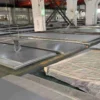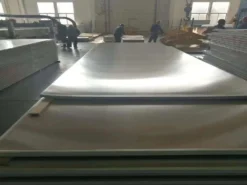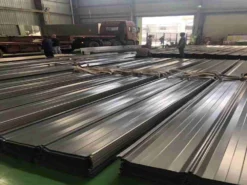Stainless steel strips are also called strips, coils, coils, and coils, and the hardness of the strips also varies. Characteristics of stainless steel: 1. Complete product specifications and diverse materials; 2. High dimensional accuracy, up to ±0.1mm; 3. Excellent surface quality and good brightness; 4. Strong corrosion resistance, tensile strength and fatigue resistance High strength; 5. Stable chemical composition, pure steel, low inclusion content; 6. Well packaged, favorable price; 7. Non-standard customization is available.
Specifications: Width 3.5mm~1550mm, thickness 0.025mm~16mm.
1. 0.25mm-0.3mm: Generally suitable for the manufacture of small products such as battery cells, automobile exhaust pipes, and electronic product casings.
2. 0.4mm-0.8mm: Suitable for furniture, construction, kitchen and bathroom industries, manufacturing wall panels, ceilings, kitchen utensils, etc.
3. 1.0mm-1.5mm: Suitable for equipment manufacturing, storage tanks, conveying machinery, etc. in chemical, papermaking, food and other industries.
4. 2.0mm-3.0mm: Suitable for manufacturing large storage tanks, storage tanks, cylinders, reactors, etc., mainly used in pharmaceutical, chemical, papermaking and other industries.
5. 4.0mm-5.0mm: Suitable for manufacturing structural parts of buildings, corrosion-resistant chemical equipment, etc.
Stainless steel is the abbreviation of stainless acid-resistant steel. Steel types that are resistant to weak corrosive media such as air, steam, and water or are stainless are called stainless steel.
Stainless steel is steel with a chromium content of at least 10.5% and a maximum carbon content of no more than 1.2%, as specified in GB/T20878-2007.
The corrosion resistance of stainless steel decreases with the increase of carbon content. Therefore, the carbon content of most stainless steel is low, with a maximum of no more than 1.2%. The ωc (carbon content) of some steels is even lower than 0.03% (such as 00Cr12 ). The main alloying element in stainless steel is Cr (chromium). Only when the Cr content reaches a certain value, the steel has corrosion resistance. Therefore, stainless steel generally has a Cr (chromium) content of at least 10.5%. Stainless steel also contains Ni, Ti, Mn, N, Nb, Mo, Si, Cu and other elements.
Stainless steel is a type of steel that is resistant to weak corrosive media such as air, steam, water, etc. or is stainless. Steel types that are resistant to chemical corrosive media (chemical corrosion such as acids, alkali, salts, etc.) are called acid-resistant steel.
Due to the difference in chemical composition between the two, their corrosion resistance is different. Ordinary stainless steel is generally not resistant to corrosion by chemical media, while acid-resistant steel is generally stainless. “Stainless steel” workpieces not only refer to a kind of stainless steel, but represent more than one hundred industrial stainless steels, so the stainless steels developed have good performance in their specific application fields. There are usually only six types of steel relevant to building construction applications. They all contain 17 to 22% chromium, and the better steel types also contain nickel. Adding molybdenum can further improve atmospheric corrosion, especially corrosion resistance in chloride-containing atmospheres.
Main Type:
Stainless steel is often divided into martensitic steel, ferritic steel, austenitic steel, austenitic-ferritic (duplex) stainless steel and precipitation hardening stainless steel according to the organizational state. In addition, it can be divided into: chromium stainless steel, chromium-nickel stainless steel and chromium manganese nitrogen stainless steel, etc.
Main features: Weldability, Corrosion Resistance, Polishability, Heat Resistance.
The corrosion resistance of stainless steel decreases with the increase of carbon content. Therefore, the carbon content of most stainless steel is low, with a maximum of no more than 1.2%. The ωc (carbon content) of some steels is even lower than 0.03% (such as 00Cr12 ). The main alloying element in stainless steel is Cr (chromium). Only when the Cr content reaches a certain value, the steel has corrosion resistance. Therefore, stainless steel generally has a Cr (chromium) content of at least 10.5%. Stainless steel also contains Ni, Ti, Mn, N, Nb, Mo, Si, Cu and other elements.
According to the composition, it can be divided into Cr series (400 series), Cr-Ni series (300 series), Cr-Mn-Ni (200 series), heat-resistant chromium alloy steel (500 series) and precipitation hardening series (600 series). SS201, SS202, SS301,SS302,SS303, SS304, SS304L, SS304N, SS309,SS309S, SS310, SS316, SS316L, SS321, SS347, SS408, SS409, SS410, SS416, SS420, SS430, SS430, SS440.
Stainless steel coil Theoretical weight calculation formula: stainless steel plate weight (kg) = length (m) * width (m) * thickness (mm) * density ρ (g/cm³).












